Pediatric UROLOGY TREATMENTs
Vesicouretral Reflux
One of the biggest obstacles to knowing if a patient suffers from VUR are the few signs and symptoms reported by those affected.

Vesicouretral Reflux
Table of Contents

definition
What is primary vesicoureteral reflux?
Primary or congenital vesicoureteral reflux (VUR) is a disease of the urinary system in which there is an unphysiological return of urine from the bladder to the kidneys through the ureters.
One of the biggest obstacles to knowing if a patient has VUR is the few signs and symptoms referred by those affected. However, recurrent urinary tract infections and discomfort or problems with urination can be an initial suspicion.
This condition usually appears during childhood (usually in breastfed babies) and, if not treated promptly and appropriately, could have devastating effects on kidney function.
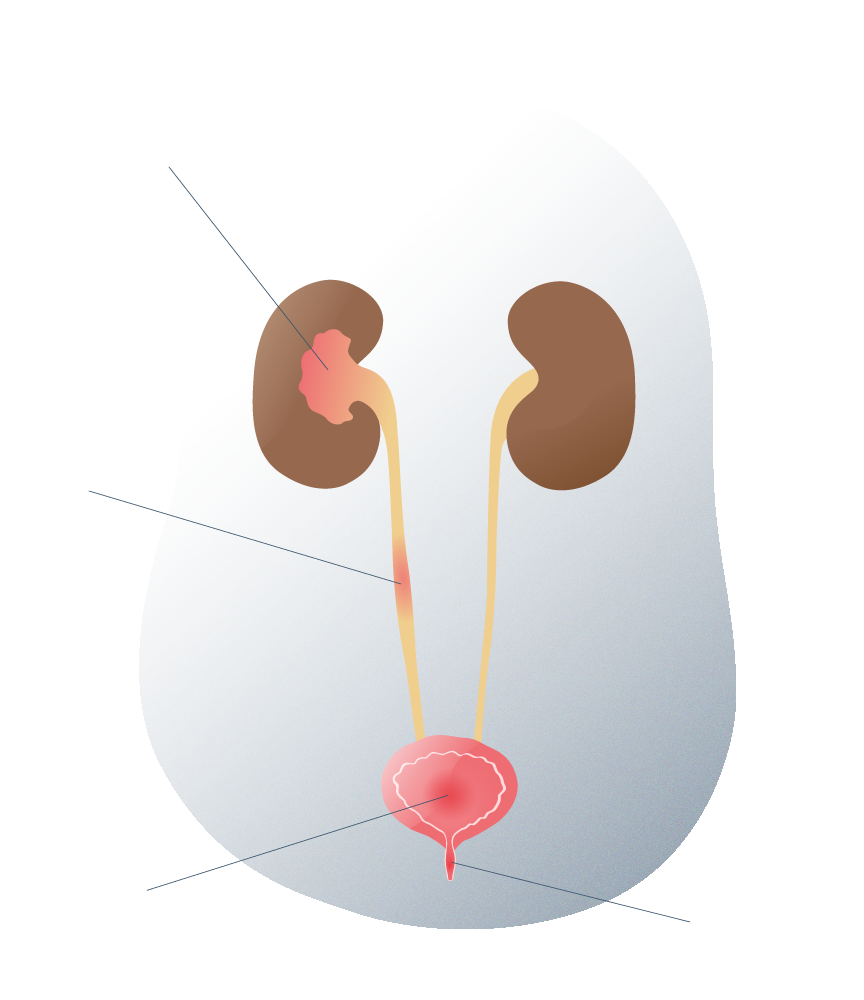
Main vesicourethral reflux
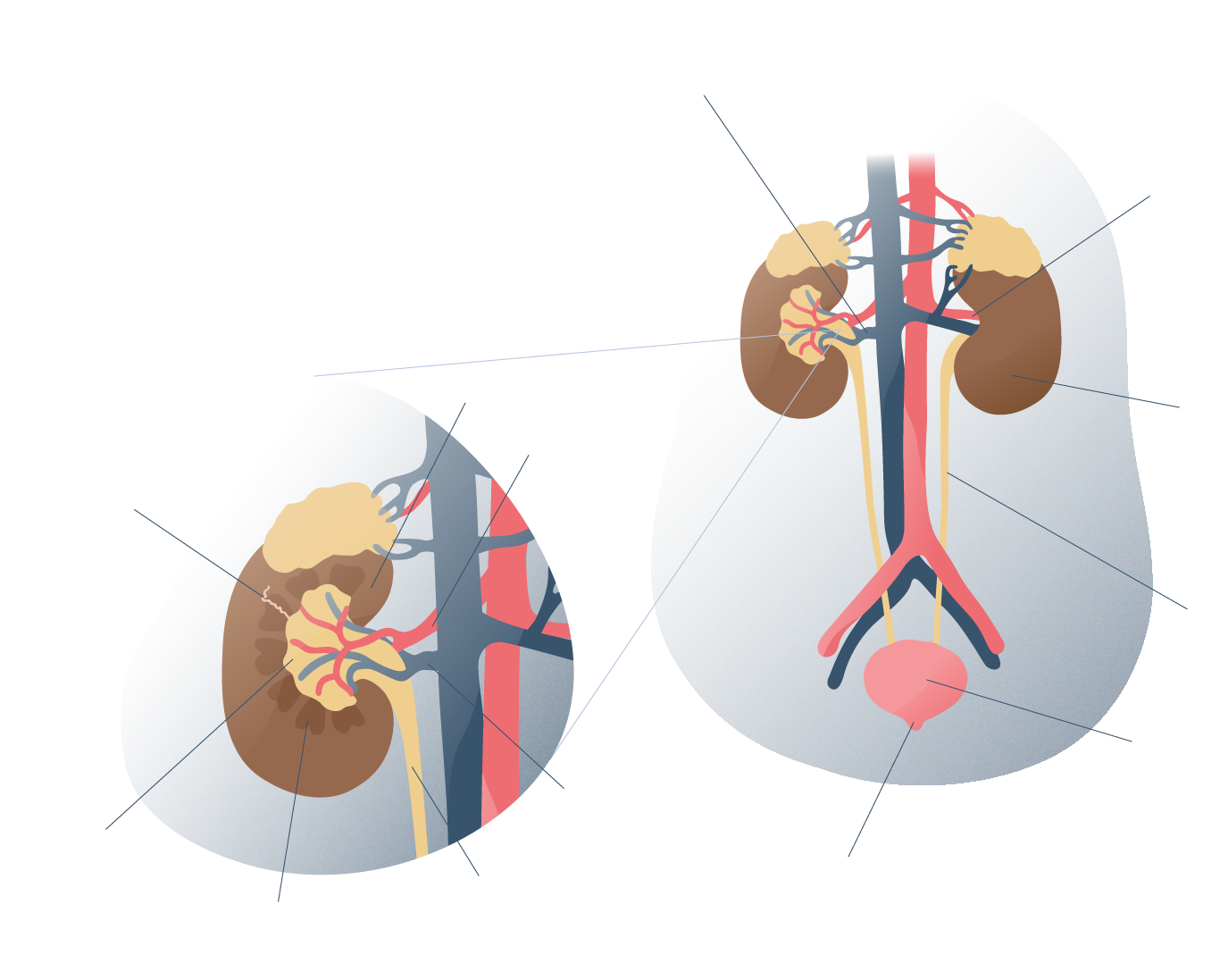
General anatomy of urinary function
Brief anatomy and physiology of urination: the urinary tract

General anatomy of urinary function
The urinary system is responsible for filtering the blood and producing and storing the urine until it is excreted, thus eliminating waste substances (or excesses of any kind) that would otherwise be harmful to the body.
The process of filtering the blood begins in the kidneys, two bean-shaped organs located near the back wall of the abdomen. There, urine flows down two long tubes (one for each kidney) called ureters to the bladder, a bag that can hold more than a litre and a half of urine. Once you feel the urge to urinate, the urine flows down to the meatus or external opening of the penis in men or the vagina in women through a less elongated tube than the ureters, called the urethra.
The delicate balance between urine production and urine output (or excretion) is what keeps the blood free of toxins and with just the right amount of water and electrolytes. Knowing this, any imbalance in this system will cause negative effects on the blood and vital organs.
Vesicoureteral reflux, a disease that can affect newborns
This type of reflux of urine through the ureters is produced by anatomical and congenital defects of the valve or sphincter in charge of preventing this from happening, making the urine stored in the bladder not find obstacles to rise again to the kidneys and thus increasing the pressure on them.
Because it is a congenital problem, vesicoureteral reflux (VUR) can begin to occur in children as young as newborns. In these cases, treatment should be initiated as soon as the diagnosis is confirmed to decrease the risk of kidney disease in adulthood.
Risk factors that predispose to the appearance of the disease
Vesicoureteral reflux (VUR) can also manifest itself in adulthood, not as a congenital defect, but because of factors that increased the likelihood of developing it, including obstructive problems of the urethra and neurogenic bladder.
These problems can cause the pressure of the fluid contained in the bladder (urine) to rise to the point of causing it to flow up the ureters to the kidneys (retrograde or backward reflux).
This would be secondary vesicoureteral reflux and can be as harmful to the urinary system’s health as congenital (or primary) reflux.
In addition to these factors, there are also others that increase the risk of VUR, including bladder and bowel problems, age (under 2 years old is more likely), sex (boys are more likely to have congenital VUR, and girls secondary VUR), race (white children are more likely to have VUR), and family history, because this anatomical abnormality can be passed down through family genetics.
Looking for prices and information?
Use our virtual assistant and receive in your email everything related to the treatments that interest you. Budgets, recovery times, hospitalization, financing possibilities month by month, etc.
In just a few minutes and without any commitment.
En cumplimiento del Reglamento General de Protección de Datos le informamos que los datos por Vd. proporcionados serán objeto de tratamiento por parte de Andromedi con la finalidad de prestarle el servicio solicitado y/o contratado. Los datos no se cederán a terceros salvo en los casos en que exista una obligación legal. Para más información puede consultarla pinchando aquí.
Vesicoureteral Reflux
Treatment Summary
This is short summary of the whole process: from the appointment request, to receiving the medical discharge after the treatment in some our Andromedi centers in Madrid, Seville or Canary islands (Tenerife)
Consultations Needed
Minimum two consultations, one to evaluate the patient and another for an image study with contrast. There is also the preoperative evaluation.
Hospital Stay
In the event of a serious reflux problem, surgery is indicated. The hospital stay for this operation is two or three days.
Anesthesia Type
General. Because the structure to be operated is very internal and general anesthesia has no side effect.
Operation Time
By laparoscopic methods, the surgery is very fast. In less than an hour the patient can be out of the operating room and back in his room.
Post-operative
Rest is usually a week, although it could be less depending on medical indications. It's necessary to consume abundant liquids.
Resuming Sex Life
As the intervention is internal with laparoscopic surgery, no visible scars are left and recovery is usually very fast.
Complications
Symptoms, diagnosis and complications: each case is very specific
As we have previously explained, the clinical manifestations of vesicoureteral reflux (VUR) can be somewhat difficult to identify because they are confused with other more frequent (and less serious) pathologies.
For example, most cases of VUR start with recurrent, difficult-to-treat urinary tract infections (UTIs), as well as problems with urination (also called dysuria) such as burning during urination, pelvic pain, feeling like you haven’t urinated at all, or urinary incontinence.

Urinary tract infection
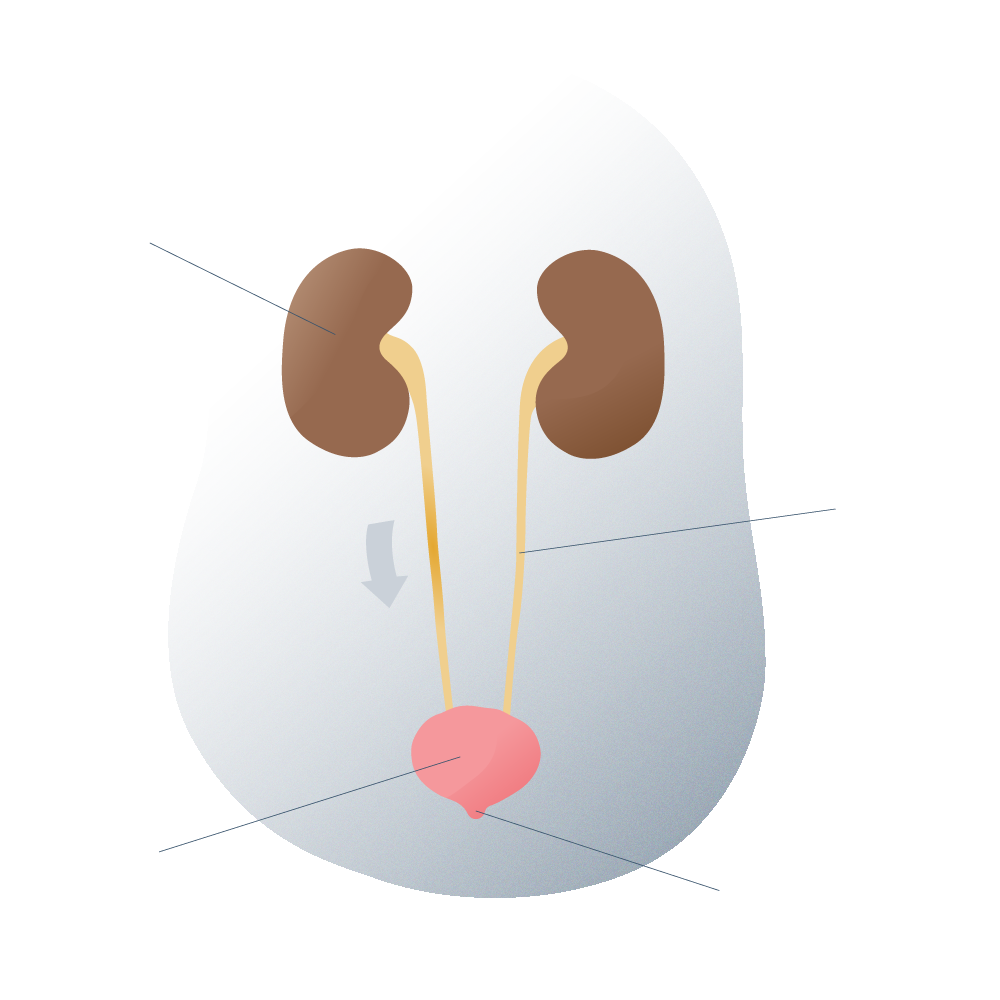
Problems in urine flow 01
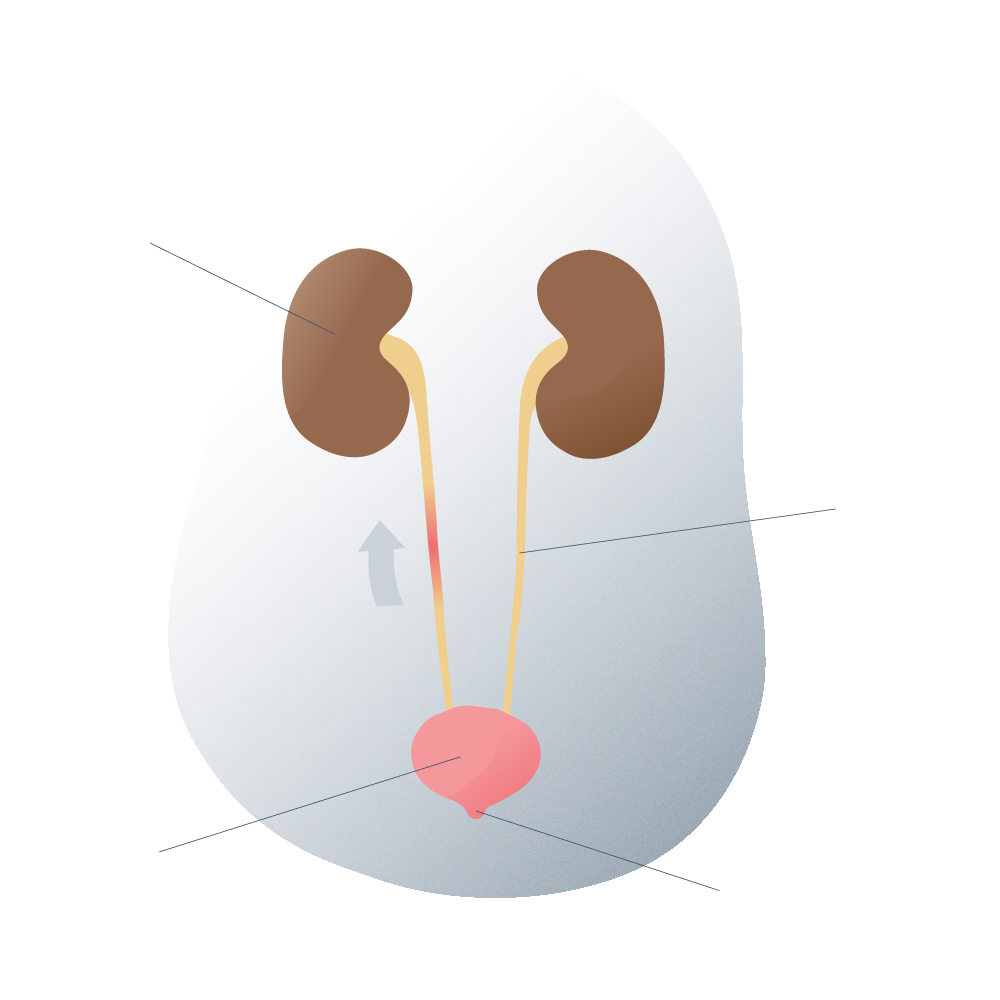
Urine flow problems 02
In young children (including babies), these signs and symptoms may be accompanied by lack of appetite, unexplained fevers, constant diarrhoea, nausea after eating, or emotional changes (irritability, insomnia…).
It is very important that parents are aware of the appearance of these health problems and thus have medical care as appropriate to the case.
TYPES OF VUR
Vesicoureteral reflux (VUR), in addition to being classified according to its origin as primary (congenital) or secondary (acquired) and according to the number of affected kidneys as unilateral (one kidney) or bilateral (both kidneys), can also be classified according to the degree of reflux:
1 When reflux only reaches the ureter without dilating it.
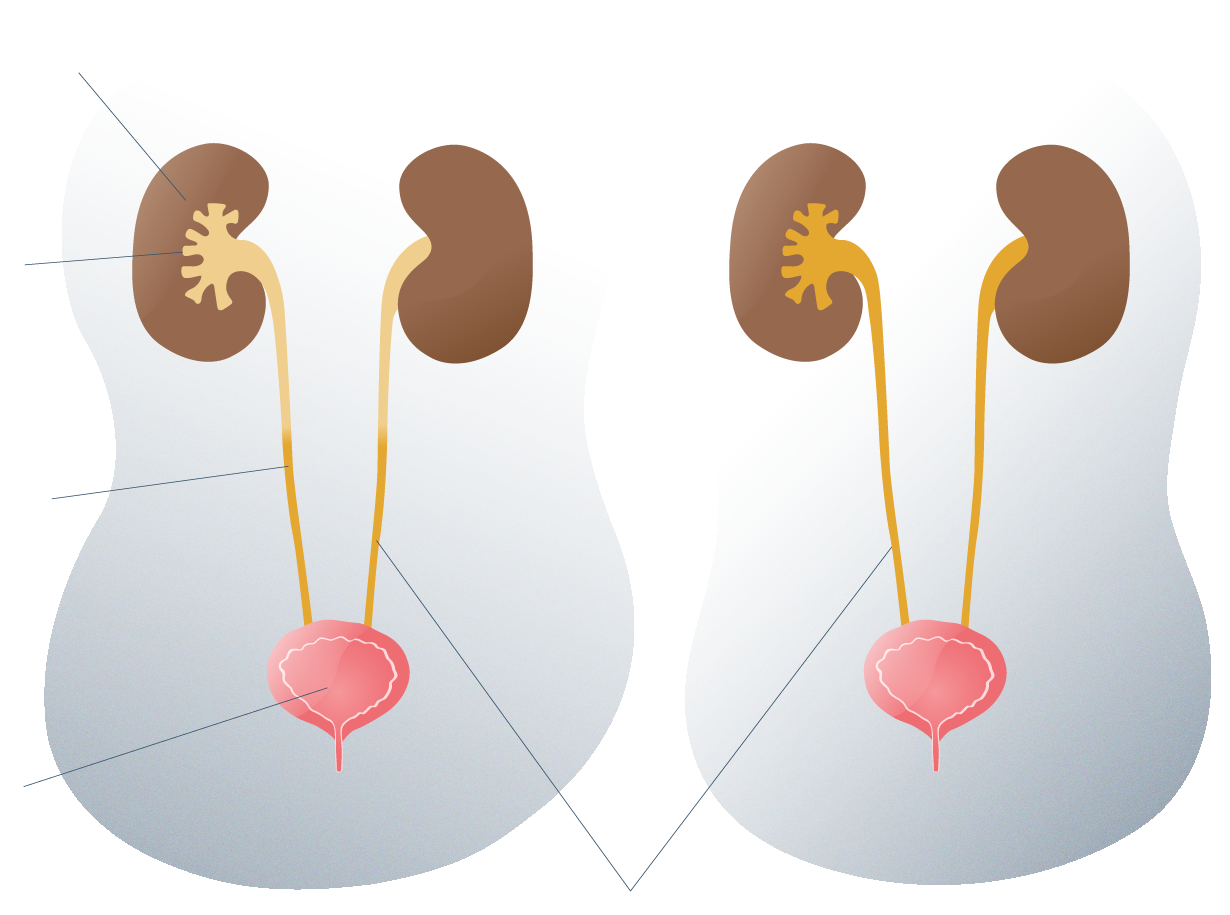
Classification of vesicourethral reflux according to severity 01
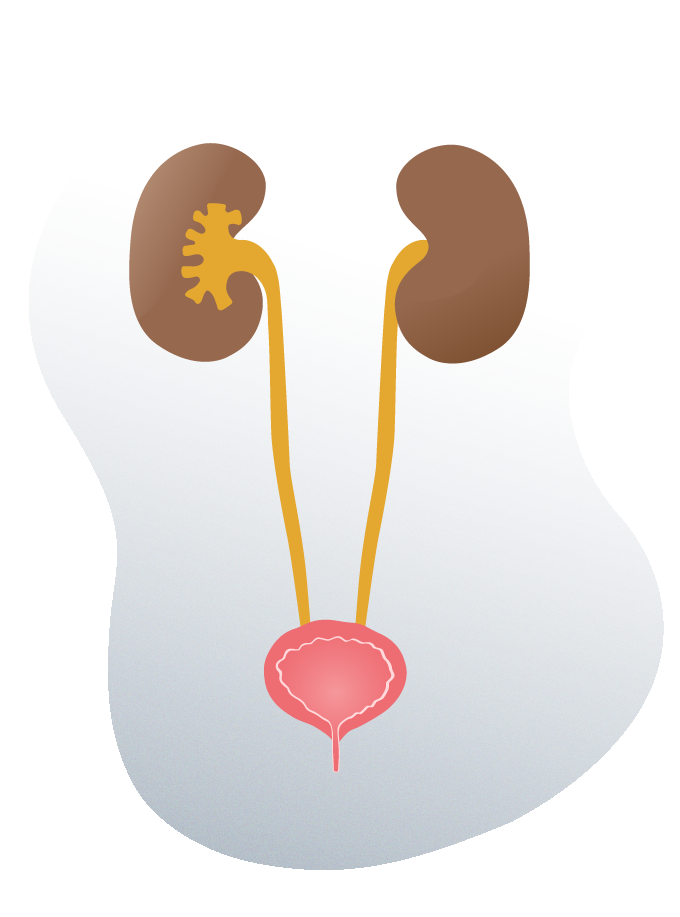
Classification of vesicourethral reflux according to severity 02
2 Reflux reaches the kidney without dilating it.

Classification of vesicourethral reflux according to severity 02
3 When reflux reaches the kidney and dilates it slightly.
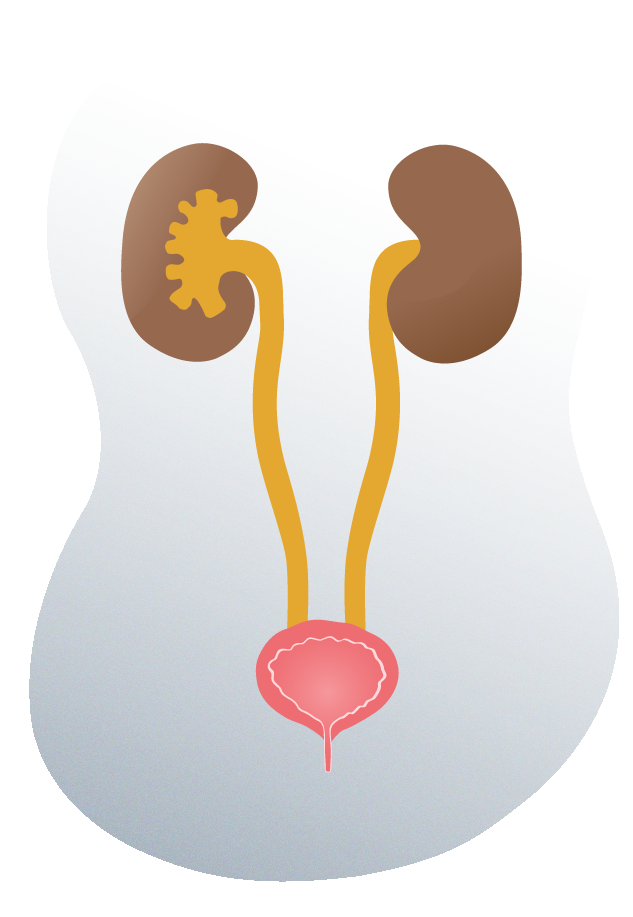
Classification of vesicourethral reflux according to severity 03
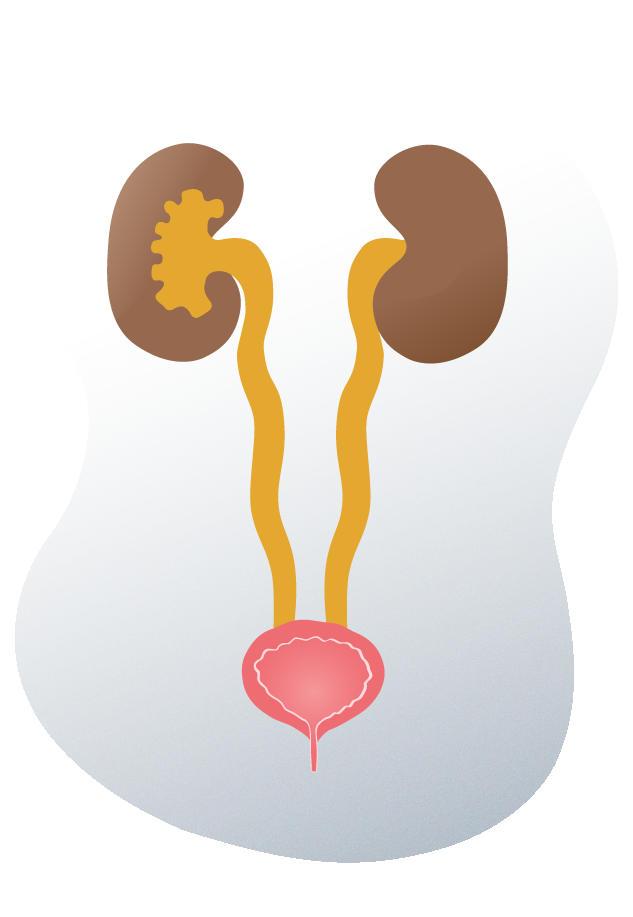
Classification of vesicourethral reflux according to severity 04
4 Moderatedilation of the kidney.

Classification of vesicourethral reflux according to severity 04
5 Dilation of the kidney is severe, with loss of its normal morphology.
A grade I and II VUR is considered to be mild, a grade III VUR is considered to be moderate, and a grade IV and V VUR are considered to be severe, leading to damage to the delicate kidney tissue.
The disproportionate increase in urine in the pelvis and calyxes of the kidney (the area where the urine exits the kidney), and thus the increased pressure within the kidney, is known as hydronephrosis and can lead to kidney failure if not treated in time.
Diagnostic Tests
A urine test may help confirm the existence of a urinary tract infection (UTI) and the most appropriate antibiotic to treat it.
Constant urinary tract infections should be taken by your doctor as a warning sign of a possible case of vesicoureteral reflux, for which other diagnostic studies should be performed, such as a renal ultrasound, cystography and renal scan, which will give the key information to confirm or rule out a problem of reflux in the ureters.
Ultrasound (also called ultrasonography) is a safe diagnostic method that can give indications of kidney abnormalities (among other abnormalities) from before birth, during gestation in the mother’s womb.
Possible complications if not treated promptly
The more severe the vesicoureteral reflux (VUR), the more likely it is to develop complications such as scarring of the kidneys (in a condition known as reflux nephropathy), high blood pressure (from increased electrolytes in the blood due to poor filtering) and kidney damage that can lead to chronic kidney failure, which is difficult to treat.
For this reason, early detection and medical treatment in the early stages of the disease is key to preventing these types of complications from developing.
Techniques and treatments
Existing treatments and solutions for vesicoureteral reflux

The clinical treatment of vesicoureteral reflux will depend not only on the degree but also on the patient’s age and other health problems that may exist.
Moderate cases
Mild to moderate VUR cases (especially in newborns) initially have expectant management or watchful waiting, i.e. constant monitoring of symptoms and administration of antibiotics as a prophylaxis to decrease the risk of developing urinary tract infections that would worsen the patient’s clinical picture and accelerate the occurrence of complications.
In the best case, anatomical problems of the ureterovesical valve could have a natural resolution thanks to the growth of structures and the development of compensation mechanisms.
Severe cases
In the event of a severe reflux problem (type IV or V), corrective surgery of the ureterovesical valve will be evaluated to repair the damage and reduce symptoms and the risk of future complications.
These surgeries include open or traditional surgery (which involves going to the operating room and, through an opening at belly skin level, correcting the defect), laparoscopic surgery (in which, through small incisions in the anterior abdominal wall, the valve is “repaired”), is more expensive but has less recovery time and almost no scarring) and endoscopic surgery (which involves inserting a small camera into the child’s bladder to visualize the inside of the bladder and the problem location, and injecting an “expanding” substance that would cause the valve to narrow and become stronger).
In either case, your doctor will make the best decision for you.


Medical evaluation
Monitoring, care, evolution and prognosis
Each case of vesicoureteral reflux (VUR) is different from the rest, so the treatment and prognosis of the disease in our clinics in Madrid, Seville and the Canary Islands (Tenerife) will depend on the characteristics of the patient.
In children, the natural progression of the disease is usually positive because the child is at a stage of growth where the valve defect could eventually repair itself.
In adults, the situation is a little different. Acquired or secondary vesicoureteral reflux (VUR) may be a consequence of another existing problem, such as problems in the bladder’s muscular layer or obstructions of the urethra.
In either case, constant medical check-ups can be a key part of successful treatments. It is not only about visualizing (through medical imaging) the urological structures but also monitoring the kidney function (such as glomerular filtration rate, quality of filtered blood, excretion of waste products, among others).
Frequently asked questions at the Andromedi centres in Madrid, Seville and Tenerife
Hide
Hydronephrosis is a disease of the kidneys in which there is dilation of the collecting system caused by poor urinary elimination.
This problem can be caused by mechanical causes (such as an obstruction in the urinary tract, vesicoureteral reflux, kidney stones…) or by physiological causes (infections of the urinary tract) that produce in the long run, compression and atrophy of the renal parenchyma, becoming less functional.
Hydronephrosis must be treated medically to prevent it from progressing to chronic renal failure.
There is no proper diet for children (or patients in general) with vesicoureteral reflux, however, a diet with high water consumption will help maintain a hypoosmotic urine production, which will keep many of the urinary tract infections at bay.
It is also advisable to reduce consumption of coffee and soft drinks because they can irritate the walls of the urinary tract and cause discomfort when urinating.
Observations made to pediatric patients with VUR have shown that there is a clear relationship between the family or genetic factor and the appearance of the disease, for example, the incidence among siblings has a probability of 27 per cent and the incidence between parents and children is 36 per cent.
However, these factors may warn the obstetrician or pediatric physician from initiating monitoring of the disease and the most appropriate treatments.
It is estimated that between one and three per cent of children suffer from some type of primary vesicoureteral reflux (VUR), many of which do not even show signs of the disease.
It is common to see a favourable progression of the disease to a natural solution, i.e., correction of the valve problem without the need for medical treatment (including medication).
However, more than half of the cases of vesicoureteral reflux of grade III or higher have a surgical solution, since the anatomical defect is too big to be repaired by itself.
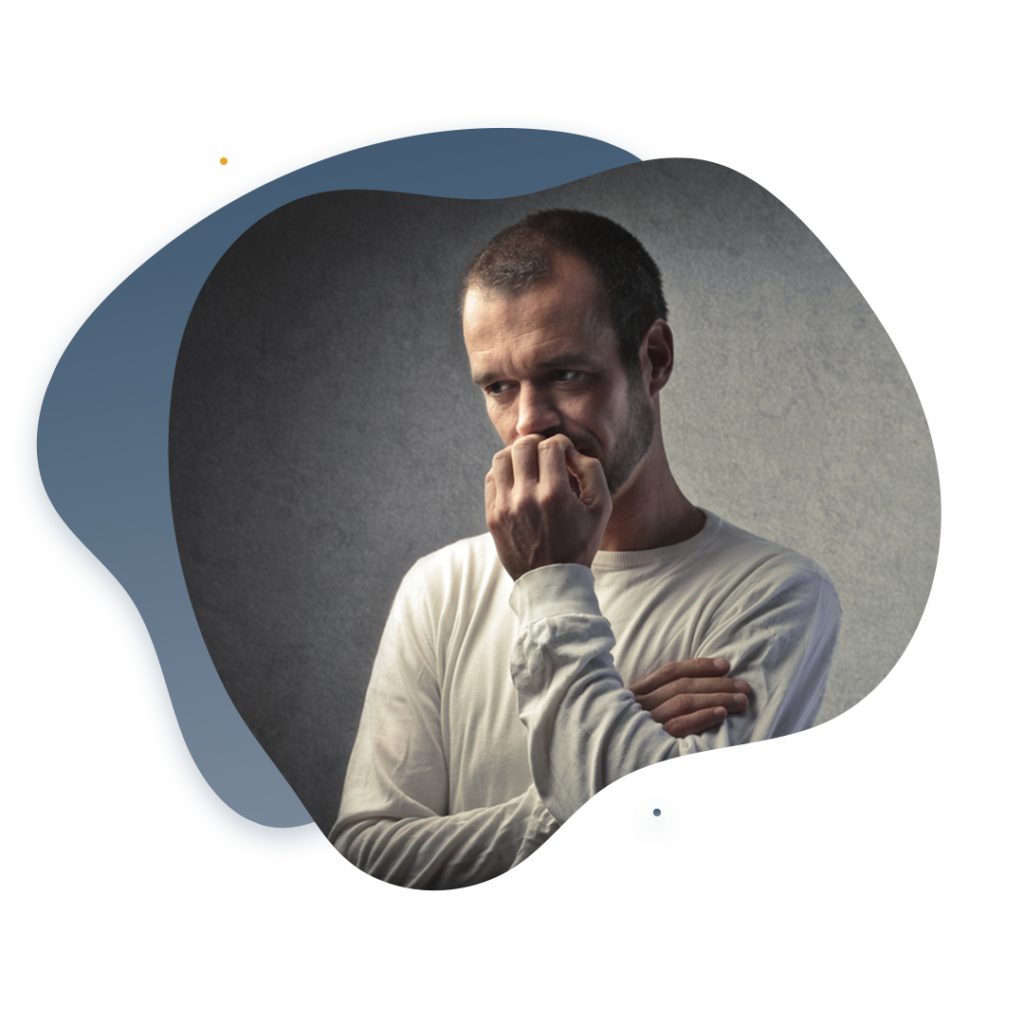 Although it is known that vesicoureteral reflux can have devastating long-term consequences if it is not treated in time, the life of children with this congenital problem can be normal as long as medical check-ups and other indications are fully complied with.
Although it is known that vesicoureteral reflux can have devastating long-term consequences if it is not treated in time, the life of children with this congenital problem can be normal as long as medical check-ups and other indications are fully complied with.
Author
Natalio Cruz MD, with 25 years of medical experience, has been until 2016 Head of the Andrology Unit in the Urology Service of the Virgen del Rocío Hospital in Seville, National Coordinator of Andrology in the Spanish Association of Urology (AEU) and General Secretary in the ESSM, positions that he has narrowed to focus squarely on this exciting project of offering a high-level private medical consultation in Marbella, Seville, Madrid and Tenerife.
Andromedi pertenece a las organizciones médicas más destacadas en el sector de la Uro-Andrología